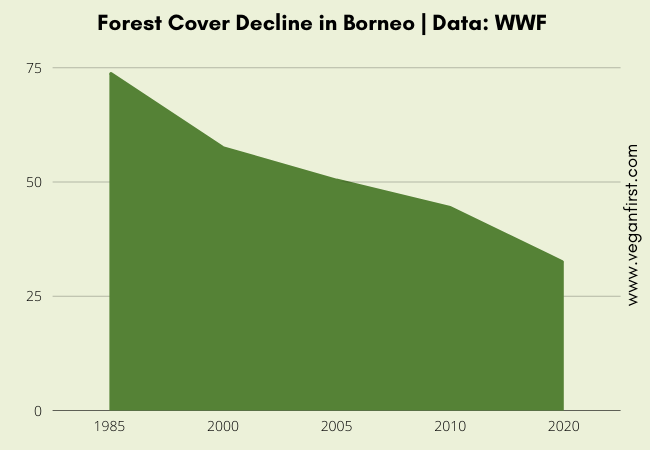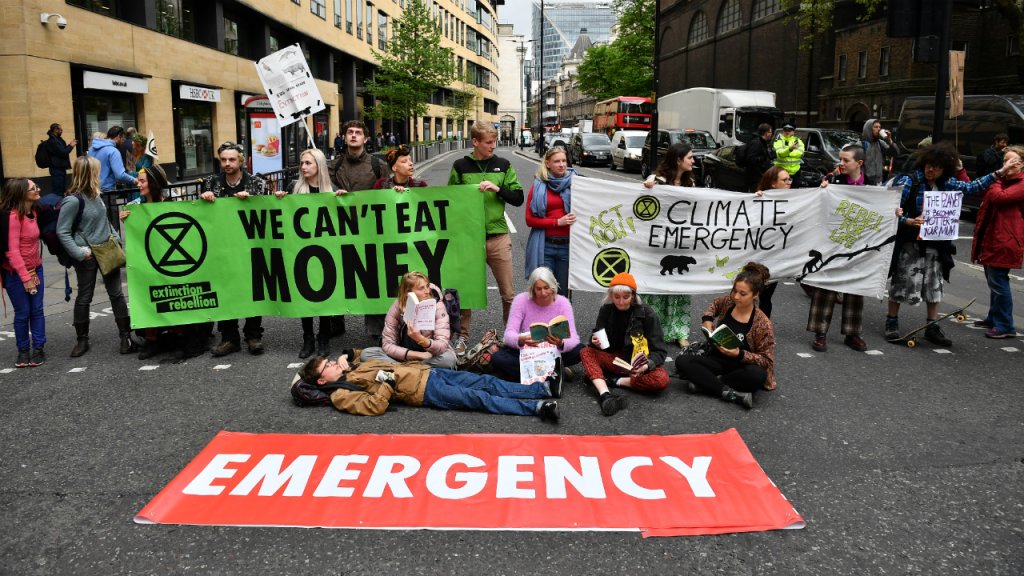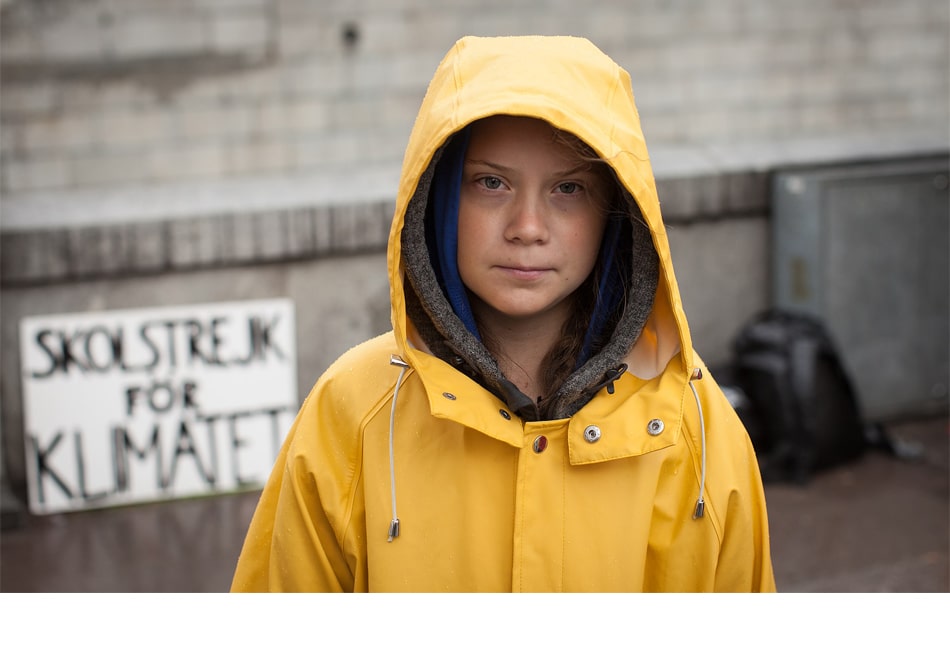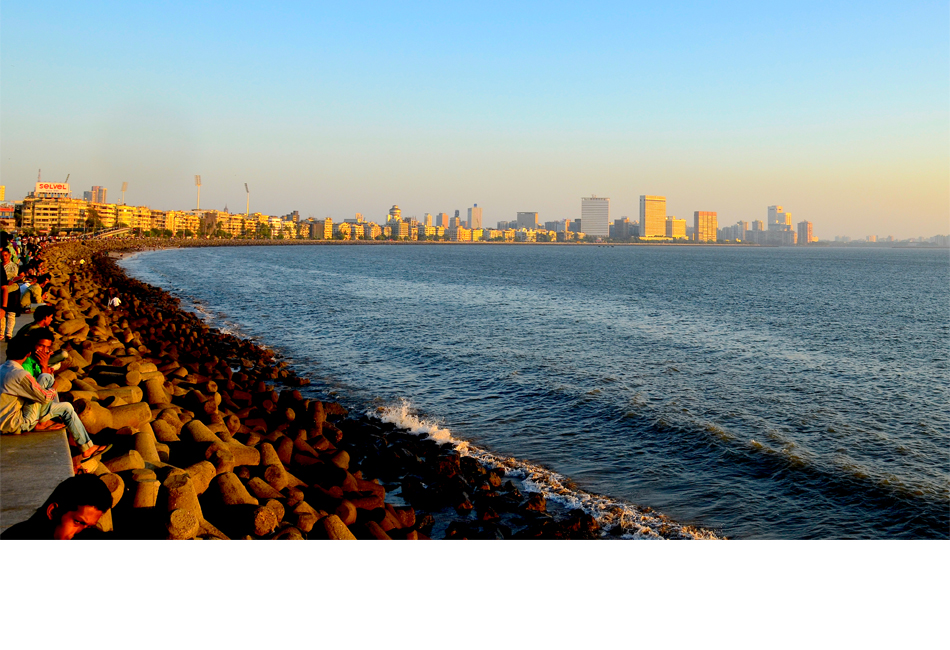Download Free Vegan Starter Kit -
1.png)
The Loss Of Biodiversity Is A Recipe For Another Pandemic: Here's Why
22 May 2021
The natural world is the backbone of all life on Earth. Human beings have relied on biodiversity since the beginning of time, which makes it imperative for us to save it from destruction.
Biodiversity has seen a major shift in the past few decades due to incessant animal agriculture and industrialization. This World Biodiversity Day, we look at how the impact of human activities have taken a toll on the natural world.
Biodiversity Has Taken a Hit: Since 1970, Population Levels of Species Have Gone Down By 44%
How are humans affected by biodiversity? Humans, like all other species, rely on the natural world for resources required to sustain life. And as of now, we are using 25% more resources than the planet can allow us in a sustainable way.
More importantly, human beings do not fall outside the natural ecosystem. A disruption in the food chain caused by the endangerment or extinction of a flora or fauna species affects the entire system, including people.
.png)
Source: BBC | Data: WWF, Living Planet Report 2018
What is climate change if not a culmination of ecological imbalance? And it has a very direct impact on human life.
Global temperature rose to 3°C in 2019. The rise in temperatures has resulted in extreme climates, rising sea levels, submerging coastal cities, and the loss of biodiversity due to habitat destruction and change in temperatures.
What kind of changes have resulted in such a catastrophe?
Fish Populations In The World’s Oceans Have Decreased by 75% In The Last 40 Years
Marine life has taken a big hit in the past few decades due to various reasons - one of the most destructive ones being industrial fishing.
Overfishing, which is prominent in 29% of global fish stocks, has led to a severe decline in fish populations. 90 fish species across the world face complete extinction. Moreover, commercial overfishing has led communities who rely on fishing as their livelihood to starvation.
.png)
Source: World Wildlife Fund
Another destructive yet common practice of the fishing industry is bottom trawling. Trawling refers to dragging large, weighed-down fishing nets across the seafloor to maximize catch. Commercial fishing deforests 3.9 acres of seafloor every year, and is responsible for creating ocean dead zones by destroying all marine life which comes in its way. Ocean dead zones have low levels of oxygen and are rampant with toxic algae blooms.
90% of large fish in the oceans have been wiped out, which includes a decline of 80-99% of shark populations since the 1970s. 50 million sharks are killed as bycatch every year, and about 73 million are killed each year for their fins alone.
Apex predators are responsible for population control. Due to the decline of large fish in the oceans, populations of smaller fish species have increased and decreased disproportionately. Moreover, many marine species are also killed as bycatch or by being entangled in discarded fishing nets, which is a much bigger cause of plastic pollution than plastic straws. About 300,000 dolphins, whales and porpoises are killed by fishing nets every year.
A disturbance in the marine ecosystem causes a chain of reactions. One indicator of this is the state of the seabird populations.
Since the 1950s, populations of seabirds have fallen by 70%
This is due to lack of food, as bycatch, and habitat destruction due to climate change.
(1).png)
The Amazon Rainforests Used To Be The Largest Land Carbon Sinks, But Are Now Turning Into a Carbon Source
Deforestation is one of the biggest issues facing the modern world. Like oceans, destruction of rainforests has a wide-scale impact on the native plant and animal species, as well as the human world.
According to a recent study, the Amazon rainforest's capacity to absorb carbon has decreased over the decades due to deforestation, and it has now become a contributor to carbon emissions.
One of the biggest causes of deforestation is animal agriculture. 70% of the Amazon rainforest has been cleared to set up cattle ranches and to grow crops for animal feed. In fact, the 2019 Amazon rainforest fires, which blanketed the Sao Paulo sky with smoke, were started to make space for animal agriculture.
Acres of rainforests are also cut or burned down for palm oil cultivation. Currently, 27 million hectares of the earth’s surface is covered in palm oil plantations. Malaysia and Indonesia produce 90% of the world’s supply of palm oil, and native wildlife species such as the Sumatran tigers, Bornean rhinos and orangutans have seen a population decline over the decades. Deforestation has destroyed the habitats of countless other animal species as well, driving them to starvation.

.png)
Globally, 40% of Birds Species Are Declining
Various factors have led to the decline of 40% of bird species globally, according to a 2018 study. One in eight bird species, i.e. about 1,469 species are threatened with extinction.
In India, bird populations have declined by 79% due to loss of habitat, urbanization and hunting, according to a recent study. The largest impact has been seen in the populations of vultures, eagles, migrating shorebirds and warblers.
Animal Agriculture Causes Pandemics
After going through these facts, it is apparent that the current state of the Covid-ridden world is not a coincidence. Biodiversity is in a state of crisis, and a large part of it is caused due to industrialized animal agriculture.
The Covid-19 pandemic was a result of animal agriculture, as was SARS, Mad Cow Disease, avian flu, swine flu and Ebola. Recently, Delhi was brought down by a bird flu scare, and 2021 also saw an H5N8 avian flu strain for the first time in humans.
Continuing with the same global food system would mean gambling away public health at the risk of zoonotic diseases.
But Can We Reverse This?
While the problem may seem irreparable, experts believe that there is still a chance to restore the natural world. One of the main solutions is right in front of us - ceasing industrialized animal agriculture. This will not be an overnight shift, and might take a decade or two, but the first step to change can begin at the individual level.
The animal agriculture industry, like any industry, survives on demand for animal products. A study conducted by the Oxford University has even concluded that shifting to a plant-based diet can reduce individual carbon impact by 75%.
A factory farm-free world will not only reduce the impact of climate change, but also lower the risk of future pandemics. Thus, shifting to a plant-based diet is a step in the right direction which many can take, and which can make a difference.
Learn more about the relation between animal agriculture and pandemics here
You Can Do More Than Going Vegan
If you are a climate warrior, simply being vegan isn’t enough. There is much more you can do apart from giving up plastic to reduce your impact on the environment. For example, buying local products, both food and non-food items, rather than imported goods can save emissions caused during the shipping process.
Composting is an effective way to dispose of kitchen waste which can produce nutrient-rich soil for your plants. Planting bee-friendly plants such as marigold, lavender, roses, hibiscus and dandelions will also promote pollination. Moreover, watering your plants in the mornings or evenings will avoid the loss of water due to evaporation in afternoons. You can also use eco-friendly pesticides rather than chemicals for healthy plants.
Reducing your energy consumption during hot months by turning off air conditioners is also possible. Instead, open your windows, draw the curtains and spray them with water to cool down the room.
Apart from that, it is important to be a conscious consumer. Buying second-hand, avoiding fast fashion, purchasing non-perishables in bulk and buying only what you need will save both resources and your money.
References:
- Goethem, T. and Zanden, J. L. (2021), ‘10. Biodiversity trends in a historical perspective’, How Was Life? Volume II: New Perspectives on Well-being and Global Inequality since 1820, OECD Publishing, Paris
- “Biodiversity and You”, WWF
- “Failing fisheries and poor ocean health starving human food supply – tide must turn”, WWF
- “Shark Finning”, Animal Welfare Institute
- University of British Columbia. "Global trends show seabird populations dropped 70 percent since 1950s." ScienceDaily. ScienceDaily, 9 July 2015
- Craig Welch, “First study of all Amazon greenhouse gases suggests the damaged forest is now worsening climate change”, National Geographic, 12 March 2021
- “Animal Agriculture Is Destroying Tropical Forests”, World Animal Foundation, 25 April 2021
- “Palm oil – deforestation for everyday products”, Rainforest Rescue
- “Questions and answers about palm oil”, Rainforest Rescue
- The IUCN Red List of Threatened Species
- “Endangered species threatened by unsustainable palm oil production”, WWF
- Marc Devokaitis, “2018 Global Report: 40% Of World’s Birds Are In Decline”, All About Birds, 13 June 2018
- State of India’s Birds (2020)
- “What is a dead zone?”, National Ocean Service
- Poore, J. and Nemecek, T. (2018), “Reducing food’s environmental impacts through producers and consumers”, Science, Vol. 360, Issue 6392, pp. 987-992
- Maria Dias, “Top threats to seabirds identified”, BirdLife International, 7 August 2019
- “Blue carbon”, IUCN
- Paul Shapiro, “One Root Cause of Pandemics Few People Think About”, Scientific American, 24 March 2020
- David Herring and Rebecca Lindsey, “Can we slow or even reverse global warming?”, Climate.gov, 29 October 2020
AUTHOR

trending
2.png)
Be a Vegan First Informer
Send us buzzworthy news and updates
Explore
Contact Us
About Us
Stay Connected
Copyright ⓒ 2017-2023. VEGAN PASSION PRIVATE LIMITED. All Rights reserved.
For more information, please write to hello@veganfirst.com
Registered Office Address: 55, 2nd floor, lane 2, Westend Marg, Saidullajab, Near Saket Metro Station, New Delhi, Gadaipur, New Delhi South West Delhi, DL

2.png)

.png)

.png)
2.png)
2.png)


1.png)







